Cutaneous stimulation of discrete regions of the sole during locomotion produces "sensory steering" of the foot
- PMID: 25202452
- PMCID: PMC4158001
- DOI: 10.1186/2052-1847-6-33
Cutaneous stimulation of discrete regions of the sole during locomotion produces "sensory steering" of the foot
Abstract
Background: While the neural and mechanical effects of whole nerve cutaneous stimulation on human locomotion have been previously studied, there is less information about effects evoked by activation of discrete skin regions on the sole of the foot. Electrical stimulation of discrete foot regions evokes position-modulated patterns of cutaneous reflexes in muscles acting at the ankle during standing but data during walking are lacking. Here, non-noxious electrical stimulation was delivered to five discrete locations on the sole of the foot (heel, and medial and lateral sites on the midfoot and forefoot) during treadmill walking. EMG activity from muscles acting at the hip, knee and ankle were recorded along with movement at these three joints. Additionally, 3 force sensing resistors measuring continuous force changes were placed at the heel, and the medial and lateral aspects of the right foot sole. All data were sorted based on stimulus occurrence in twelve step-cycle phases, before being averaged together within a phase for subsequent analysis.
Methods: Non-noxious electrical stimulation was delivered to five discrete locations on the sole of the foot (heel, and medial and lateral sites on the midfoot and forefoot) during treadmill walking. EMG activity from muscles acting at the hip, knee and ankle were recorded along with movement at these three joints. Additionally, 3 force sensing resistors measuring continuous force changes were placed at the heel, and the medial and lateral aspects of the right foot sole. All data were sorted based on stimulus occurrence in twelve step-cycle phases, before being averaged together within a phase for subsequent analysis.
Results: The results demonstrate statistically significant dynamic changes in reflex amplitudes, kinematics and foot sole pressures that are site-specific and phase-dependent. The general trends demonstrate responses producing decreased underfoot pressure at the site of stimulation.
Conclusions: The responses to stimulation of discrete locations on the foot sole evoke a kind of "sensory steering" that may promote balance and maintenance of locomotion through the modulation of limb loading and foot placement. These results have implications for using sensory stimulation as a therapeutic modality during gait retraining (e.g. after stroke) as well as for footwear design and implementation of foot sole contact surfaces during gait.
Figures
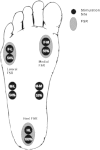


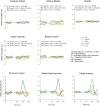

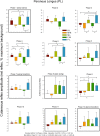
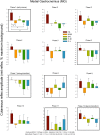

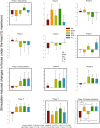
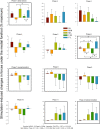
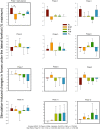

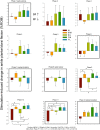

Similar articles
-
Beyond the Bottom of the Foot: Topographic Organization of the Foot Dorsum in Walking.Med Sci Sports Exerc. 2017 Dec;49(12):2439-2450. doi: 10.1249/MSS.0000000000001389. Med Sci Sports Exerc. 2017. PMID: 29135783
-
Long-lasting changes in muscle activation and step cycle variables induced by repetitive sensory stimulation to discrete areas of the foot sole during walking.J Neurophysiol. 2021 Feb 1;125(2):331-343. doi: 10.1152/jn.00376.2020. Epub 2020 Dec 16. J Neurophysiol. 2021. PMID: 33326346
-
Contributions to the understanding of gait control.Dan Med J. 2014 Apr;61(4):B4823. Dan Med J. 2014. PMID: 24814597 Review.
-
Modulation of lower limb withdrawal reflexes during gait: a topographical study.J Neurophysiol. 2004 Jan;91(1):258-66. doi: 10.1152/jn.00360.2003. Epub 2003 Sep 10. J Neurophysiol. 2004. PMID: 12968008
-
Cutaneous and muscular afferents from the foot and sensory fusion processing: Physiology and pathology in neuropathies.J Peripher Nerv Syst. 2021 Mar;26(1):17-34. doi: 10.1111/jns.12429. Epub 2021 Jan 21. J Peripher Nerv Syst. 2021. PMID: 33426723 Review.
Cited by
-
Repeated and patterned stimulation of cutaneous reflex pathways amplifies spinal cord excitability.J Neurophysiol. 2020 Aug 1;124(2):342-351. doi: 10.1152/jn.00072.2020. Epub 2020 Jun 24. J Neurophysiol. 2020. PMID: 32579412 Free PMC article.
-
Plantar tactile perturbations enhance transfer of split-belt locomotor adaptation.Exp Brain Res. 2015 Oct;233(10):3005-12. doi: 10.1007/s00221-015-4370-1. Epub 2015 Jul 14. Exp Brain Res. 2015. PMID: 26169104 Free PMC article.
-
Modeling foot sole cutaneous afferents: FootSim.iScience. 2022 Dec 24;26(1):105874. doi: 10.1016/j.isci.2022.105874. eCollection 2023 Jan 20. iScience. 2022. PMID: 36636355 Free PMC article.
-
The firing characteristics of foot sole cutaneous mechanoreceptor afferents in response to vibration stimuli.J Neurophysiol. 2017 Oct 1;118(4):1931-1942. doi: 10.1152/jn.00647.2016. Epub 2017 Jul 5. J Neurophysiol. 2017. PMID: 28679842 Free PMC article.
-
Velocity ratings and perceptual qualities of electrotactile stimulation of the foot sole are impacted by direction, stimulus interval, and cutaneous saltation.Perception. 2025 Mar;54(3):160-179. doi: 10.1177/03010066251315053. Epub 2025 Jan 31. Perception. 2025. PMID: 39887193 Free PMC article.
References
-
- Zehr EP, Komiyama T, Stein RB. Cutaneous reflexes during human gait: electromyographic and kinematic responses to electrical stimulation. J Neurophysiol. 1997;77(6):3311–3325. - PubMed
LinkOut - more resources
Full Text Sources
Other Literature Sources

